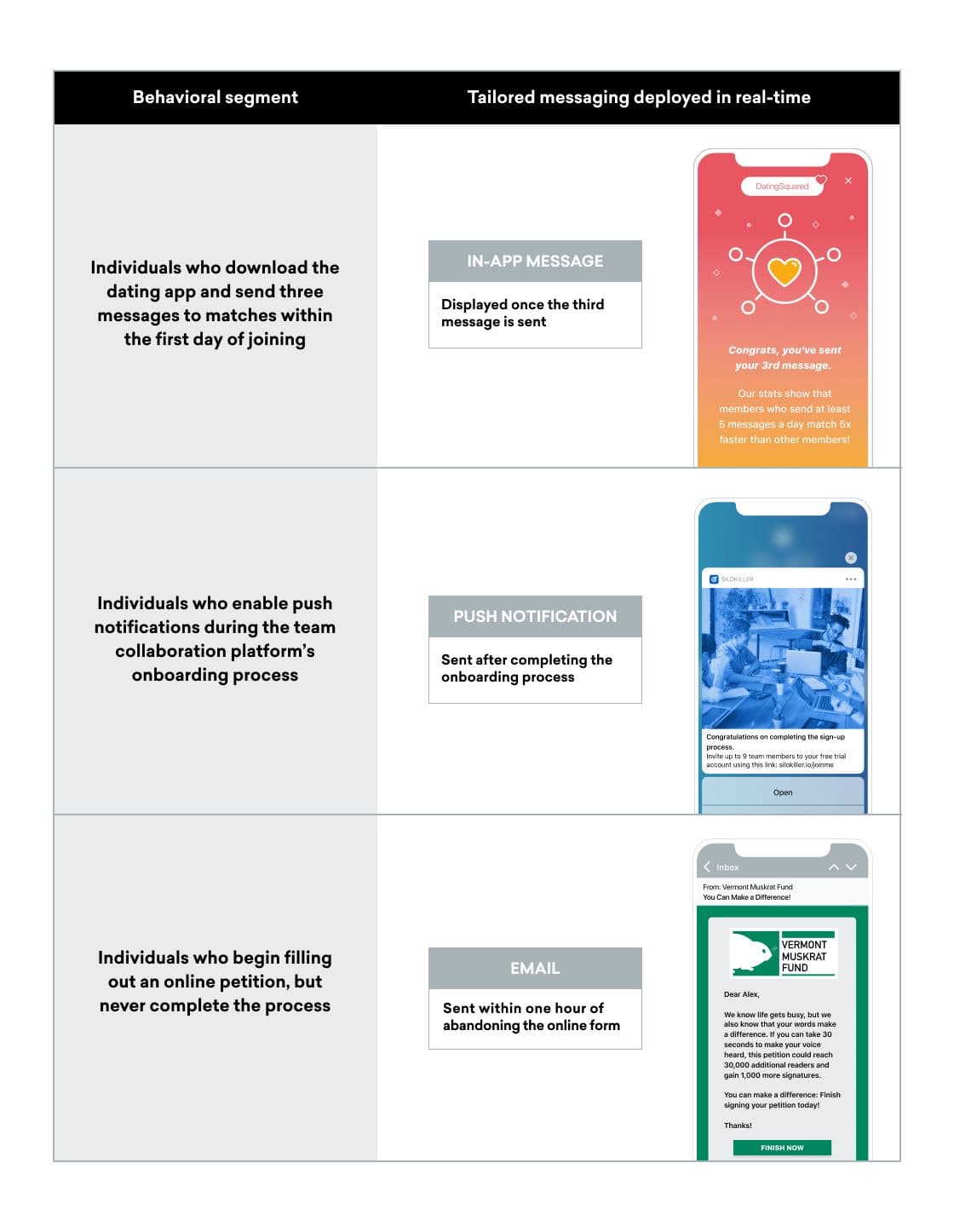Go Beyond Conversions and Measure Customer Engagement
Conversion is step one. Cultivating customer loyalty—through personalization, relevant messaging, and the best customer experiences—comes next.
A dating app that attracts millions of downloads without successfully convincing a single person to set up a profile or send that first message might as well have no users at all. A teamwork collaboration platform that never converts free-trials to paying subscribers won’t survive. An advocacy group that builds a massive list of email subscribers who never take action is one that’s really missing the mark.
Knowing that someone has downloaded your app, begun a free trial, or become an email subscriber is an important first step in measuring the results of your growth, marketing, and engagement efforts. Conversions are, afterall, a critical KPI—one of the most telling metrics to track, and a signal that customers have completed actions that are critical to your business. But, conversions only tell part of the story.
Businesses are not sustained by customers who take one action, even if it’s a really important one. Businesses succeed when individuals repeatedly engage over sustained periods of time. Many companies adhere to a longstanding 80/20 rule: Cultivate an engaged 20% of customers who will generate about 80% of your business. For some, the ratio may be as high as 90/10. In other words, conversions by themselves are not a measure of success. Growing conversions in the context of cultivating customer loyalty, on the other hand, is the key.
Measuring Beyond Conversions: Tracking Behavioral Data
Marketing, growth, and engagement teams looking to level up their efforts can take things a step (or many steps) further than measuring conversions alone by tracking the subsequent actions customers take over time beyond the initial conversion.
Remember the dating app, teamwork collaboration platform and advocacy group we mentioned above? For all these brands (and many more besides), the possibilities that exist when it comes to choosing behavioral data to track are endless. One key element to examine? Segments of individuals who have taken a specific type of action within a given timeframe. For instance:
- Individuals who download the dating app and send three messages to matches within the first day of joining
- Individuals who enable push notifications during the team collaboration platform’s onboarding process
- Individuals who begin filling out an online petition created by the advocacy group, but never complete the process
Understanding what actions users are taking (and not taking), when they’re taking them, and whether certain actions within certain time frames are associated with stronger engagement, retention, and ROI are essential for long-term success. But that success isn’t just about tracking the right data and carrying out the right kinds of analysis. There’s another task that goes hand in hand with tracking these kinds of behavior insights in real-time—responding to each and every customer in the moment with tailored messaging. That’s where data meets marketing.
Where Data Meets Marketing
It’s long been the case that data and marketing have operated in silos at many companies, with all the information about how customers are behaving in one purview, and all the content being generated to encourage engagement under a different purview. In reality, data and marketing should act as two sides of the same coin, two puzzle pieces that fit perfectly together. And that’s possible when you combine behavioral analytics with customer lifecycle engagement.
When brands have access to the kinds of behavioral data discussed here and can take action based upon it by sending relevant messages in the moment—such as these illustrated below—companies have the chance to optimize customer experiences:

Businesses that are able to understand and meet customer wants and needs, in real-time, as illustrated above see engagement improve across the board—in fact, effective personalization efforts can raise revenue by 10-30%.
Defining the Metrics That Matter for Your Business
What success looks like varies for each individual brand—but bringing together data-driven insights and timely, relevant messaging is a great recipe for any brand looking to improve their marketing efforts. The key? Identifying the actions and metrics that move the needle for your brand with analytics…and then taking action.
That’s what IBM did. By assessing the impact of its growth, marketing, and engagement efforts across key behavioral actions and then using those insights to power lifecycle campaigns, the company was able to increase down-the-funnel conversions by 5x, bringing in an additional $800,000—for one campaign alone. Get the details on how they made it happen here: How IBM Uses Braze and Amplitude to Boost Conversions by Up to 5x.

Mary Kearl
Freelance Digital Strategist
Mary Kearl is a writer and digital strategist who has led email, social media, and content marketing for several brands. She has helped launch six mobile apps and one niche social network and is always up for a good Netflix/Hulu/Amazon Prime binge recommendation or travel tip.
More from Mary




